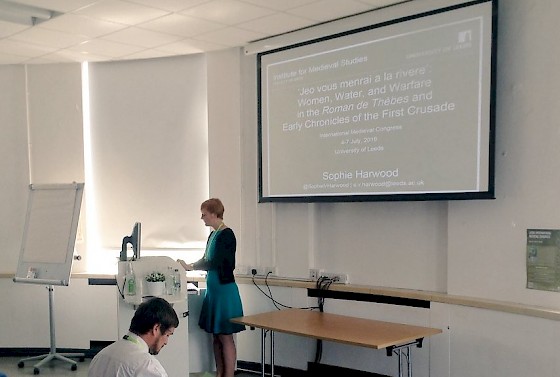Five Things I Learned Today about Medieval Warfare - Day 2 at the International Medieval Congress
The theme for this year’s International Medieval Congress is ‘Food, Feast and Famine’. Many of the papers being given at the conference relate to these issues, including ones about medieval warfare. Here are five things I heard on Tuesday:
1) What the Crusaders ate when they were besieged
Archaeological work by Miriam Pines of Tel Aviv University has allowed her to discover new insights into the siege of Arsur in 1265. Two rubbish pits have revealed what was eaten by its inhabitants before and during the siege, which lasted forty days and ended in its capture by the Mamluks. Thousands of animals of bones discovered in these pits show that chicken and pork were the main foodstuffs for the crusaders during the siege. Chicken bones represent nearly 70% of the bones found in the castle’s refuse pit, and Pines suggests that stresses of the siege compelled the defenders to rely on animals like chickens and pigs, which were very easy to manage and took up relatively little space. Moreover, the siege took place during the season of Lent, and Pines sees a connection between the religious festival, when the eating of red meats would have been restricted, and the heavy use of chicken.
2) Edward II had to deal with unprecedented food shortages
When the Great Famine struck northern Europe between 1315-17, its impact on the military plans of states could be severe. Historian Ilana Krug demonstrates how the the famine placed a strain on the English war machine, and how King Edward II had to be creative in bringing food supplies to his troops.
From 1315 to the early 1320s the English were on the defensive against the Scots in both the northern borderlands of England and in Ireland, as well as against the Welsh. In order to make sure his military forces had enough food supplies, Edward II actually imported grains from the continent, even commissioning one Italian merchant to bring in 17,000 quarters of wheat from the Mediterranean. He also forbade the export of food from England, and tried to implement price controls within his country, but this latter effort failed.
3) The Vikings in Frisia
The discovery of a Viking armband in northern Netherlands is more evidence of the presence of the Norse in the lands known as Frisia during the ninth century. Nelleke IJssennagger of Friesland Museum suggests that this and other finds discovered by metal detectors reveals the connections Vikings had in this region.
4) “Food was a masculine space, water a feminine space”

Sophie Harwood of the University of Leeds presented research comparing various texts from the Crusades with the Roman de Thebes, a twelfth-century poem. She finds similarities in certain themes, including how men were responsible were food while women would be for water - in Crusader texts one often reads episodes where women would bring up water to the soldiers. Moreover, washer women were the only officially authorized females to take part in the First Crusade. Harwood sees how this connects with literary depictions of women when it relates to the use of water.
5) The Crusaders vs Idleness
On several occasions, the campaigns of crusaders came to a halt. At places like Antioch during the First Crusade and Damietta in the Fifth, the crusader army had to remain in place for months at a time. Belinda Guthrie notes that some chroniclers justified these actions, noting that the troops and their horses needed time to recover, in many cases they were critical of this, suggesting that it lead to sinful actions such as drunkenness and fornication, and that time was being wasted. Oliver de Paderborn, one of the most important chroniclers of the Fifth Crusade, noted in several occasions how the crusaders “fell into idleness and laziness as was their custom.”
The International Medieval Congress continues until Thursday. Click here to read about Day 1.
